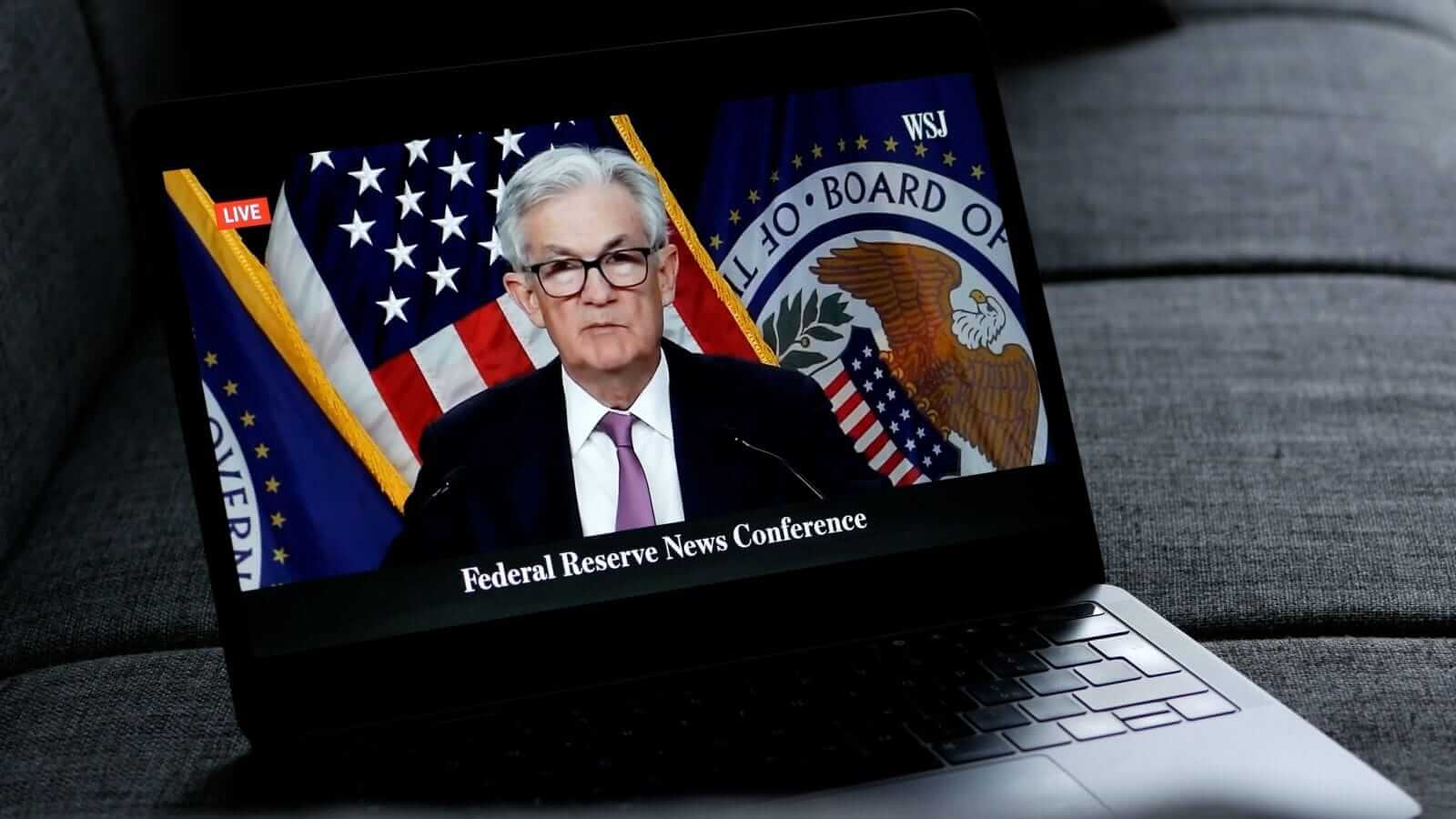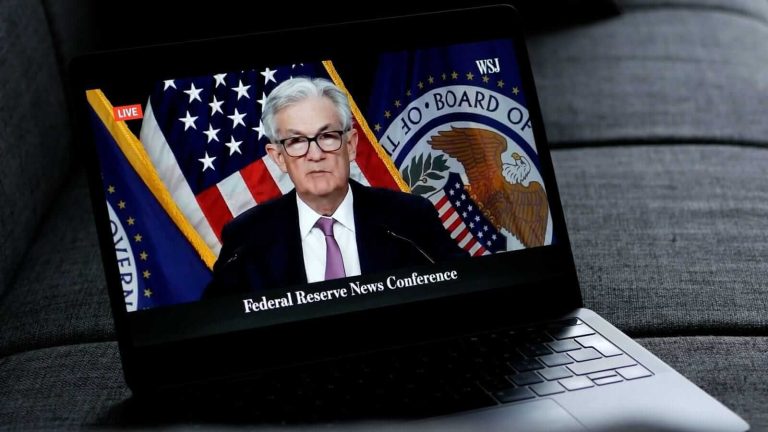Key Takeaways
- The U.S. Dollar Index (DXY) rallied to a two-week high, driven by easing trade tensions and hawkish remarks from the Federal Reserve.
- Finalized trade deals between the U.S. and South Korea, along with progress in U.S.-China trade talks, contributed to dollar strength.
- Federal Reserve Chair Jerome Powell indicated that a December rate cut is not guaranteed, boosting the dollar despite an anticipated rate cut.
- While a 25 basis point Fed rate cut occurred, Powell’s cautious outlook on future reductions influenced market sentiment positively for the dollar.
- Gold and silver prices showed mixed performance, with futures closing higher despite initial pressure from a strengthening U.S. dollar.
Dollar Rallies Amid Trade Detente and Fed’s Hawkish Stance
The U.S. Dollar Index (DXY) experienced a significant rally, marking a two-week high and closing up 0.62%. This upward movement was bolstered by a backdrop of easing global trade tensions, which typically supports improved economic growth prospects. Notably, the finalization of a trade deal between the U.S. and South Korea, which includes substantial South Korean investment in shipbuilding and limits U.S. tariffs on specific goods to 15%, contributed to this sentiment.
Further alleviating trade-related concerns were remarks from President Trump suggesting an expectation of lower tariffs on Chinese goods, potentially linked to efforts addressing the fentanyl crisis. While such developments can reduce the need for safe-haven assets like the dollar, its sustained strength indicates other underlying positive drivers.
Federal Reserve’s Influence on Dollar’s Strength
Despite the Federal Open Market Committee (FOMC) implementing a 25 basis point interest rate cut and signaling the conclusion of quantitative tightening, the dollar’s gains accelerated. The primary catalyst for this was the hawkish tone adopted by Fed Chair Jerome Powell. Powell explicitly stated that a further rate reduction in December is not a certainty, a comment that clearly resonated with market participants and provided significant support for the dollar.
The FOMC statement itself acknowledged rising downside risks to employment and noted that inflation had increased since earlier in the year, remaining somewhat elevated. Powell’s cautious stance regarding future rate cuts was a key takeaway, influencing market expectations for monetary policy. Although a 25 basis point cut was widely anticipated and delivered, the commentary on subsequent policy adjustments was more reserved than some had predicted.
Market Outlook on Future Federal Reserve Policy
Current market pricing indicates approximately a 69% probability of another 25 basis point rate cut by the FOMC at their upcoming meeting scheduled for December 9-10. Looking further ahead, market participants are discounting around 72 basis points of total rate cuts by the end of 2026, which would bring the effective federal funds rate down to an estimated 3.40% from the current 4.12% level.
💡 Powell’s commentary suggests the Fed might be more inclined to maintain current interest rates if economic data does not definitively warrant further easing, creating a degree of uncertainty that can be beneficial for the dollar.
Trade Negotiations and Geopolitical Factors Shaping Currency Markets
The dollar’s performance is also reflective of ongoing trade negotiations. A tentative trade agreement reached between U.S. and Chinese negotiators over the weekend was anticipated to be finalized at a summit involving Presidents Trump and Xi. This agreement reportedly eases the threat of 100% tariffs on U.S. imports from China, which were slated to take effect on November 1. Additionally, China has agreed to refrain from restricting rare earth metal exports for at least a year and has pledged to purchase a significant quantity of U.S. soybeans.
Progress has also been reported on issues concerning shipping fees and U.S. demands for China to curb the export of fentanyl and its precursors. Furthermore, there exists potential for an agreement that would permit continued U.S. consumer access to TikTok. These diplomatic efforts have helped to alleviate some immediate trade-related pressures.
📌 The ongoing U.S. government shutdown remains a persistent factor exerting downward pressure on the dollar. The longer the shutdown continues, the greater the potential negative impact on the U.S. economy, which could, in turn, increase the likelihood of future Fed rate cuts.
Key Currency Market Movements
The Euro experienced a decline against the dollar, with EUR/USD falling by 0.60%. This weakness in the euro is largely attributed to the overall strength of the U.S. dollar. However, the euro’s losses were somewhat moderated by divergences in central bank policies, as the European Central Bank (ECB) is widely considered to have concluded its rate-cutting cycle, while the Federal Reserve is still expected to implement further reductions.
Current swap agreements indicate a low probability (1%) of a 25 basis point rate cut by the ECB at its upcoming policy meeting on October 30. In contrast, USD/JPY saw an increase of 0.56%. The Japanese yen had previously shown strength against the dollar, reaching a one-week high, but this trend reversed as T-note yields climbed following Powell’s cautious commentary on future rate adjustments.
The yen had initially strengthened on remarks from Treasury Secretary Steven Mnuchin regarding the importance of the Bank of Japan’s (BOJ) policy flexibility in anchoring inflation expectations and preventing exchange rate volatility. The rise in Japan’s October consumer confidence index to a 10-month high also provided some support for the yen.
✅ Japan’s consumer confidence index for October improved by 0.5 points to 35.8, surpassing expectations of 35.5 and indicating growing consumer optimism.
The prevailing market consensus anticipates that the Bank of Japan will maintain its policy rate at 0.50% during its forthcoming policy meeting. Swap rates suggest a low probability (14%) of a rate hike at this meeting.
Precious Metals’ Response to Dollar Strength and Fed Signals
December COMEX gold futures closed higher on Wednesday, gaining $17.60, or 0.44%, to settle at $4,000.70 per ounce. December COMEX silver futures also recorded gains, closing up $0.589, or 1.24%, at $47.913 per ounce.
Prices for precious metals experienced a recovery on Wednesday, recouping some of the losses incurred earlier in the week, which had pushed gold to a three-week low and silver to a one-month low. This rebound was partly attributed to short-covering activity leading up to the conclusion of the FOMC meeting.

⚡ However, gold prices saw a notable decline of over $40.00 per ounce in after-hours trading on Wednesday, even after the anticipated FOMC rate cut and the announcement of the end of quantitative tightening. Federal Reserve Chair Powell’s hawkish commentary regarding the prospects of a December rate cut weighed on precious metals, contributing to the dollar’s surge to a two-week high.
Underlying support for precious metals persists due to factors such as the ongoing U.S. government shutdown, trade uncertainties, geopolitical risks, central bank purchases, and concerns regarding the Fed’s independence. Recent weaker U.S. economic data has also signaled potential for further Fed rate cuts, which generally presents a bullish scenario for precious metals.
Despite these supportive elements, precious metals have faced significant long liquidation pressures since reaching record highs earlier in the month. The preliminary U.S.-China trade agreement announced over the weekend, coupled with the recent rally in the S&P 500 to new record highs, has diminished safe-haven demand for precious metals.
The sector has experienced pressure from substantial long liquidation and outflows from gold and silver Exchange Traded Funds (ETFs). Holdings in gold ETFs have decreased from recent three-year highs, and silver ETF holdings have fallen from their 3.25-year peaks.
Concluding Market Observations
The U.S. dollar’s performance was notably influenced by hawkish signals originating from the Federal Reserve, which counteracted the initial impact of anticipated rate cuts and trade optimism. Market attention is now shifting towards upcoming economic data releases and future communications from the Fed to ascertain the trajectory of monetary policy and its subsequent effects on global currency markets.

